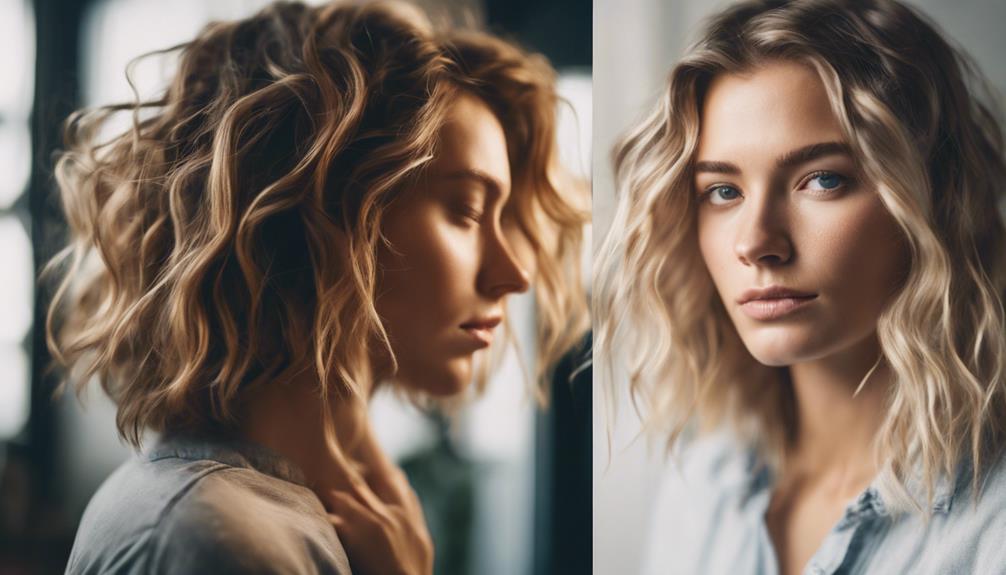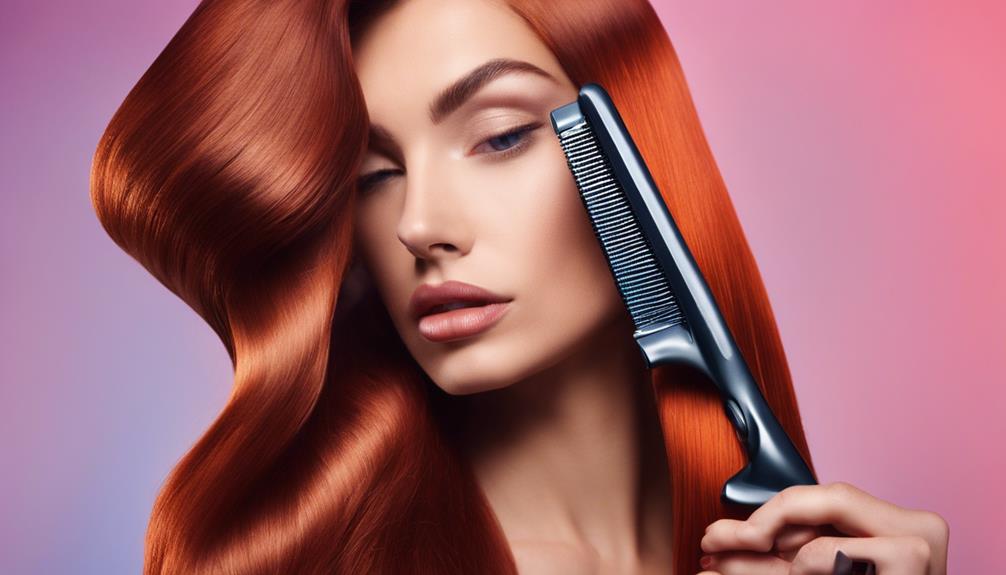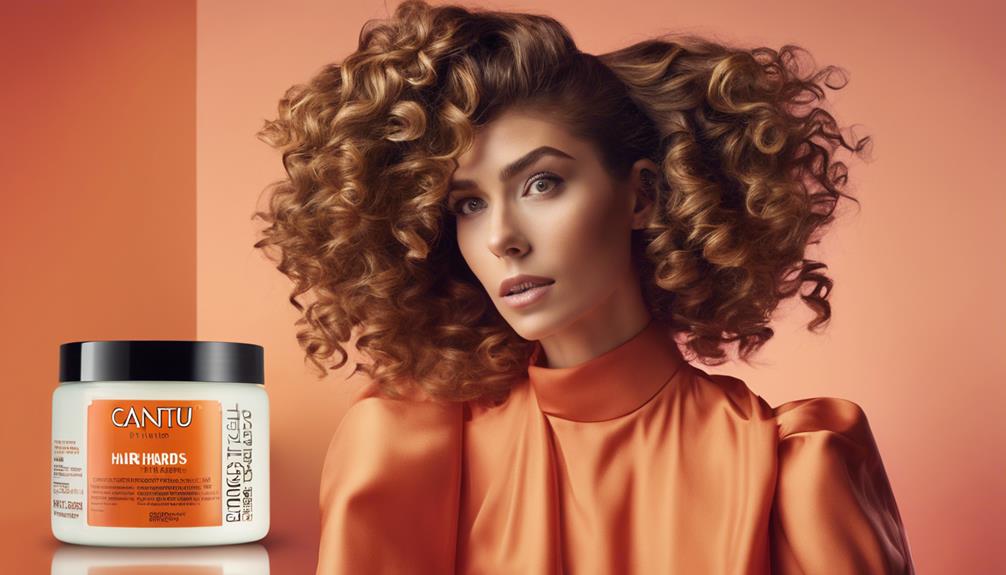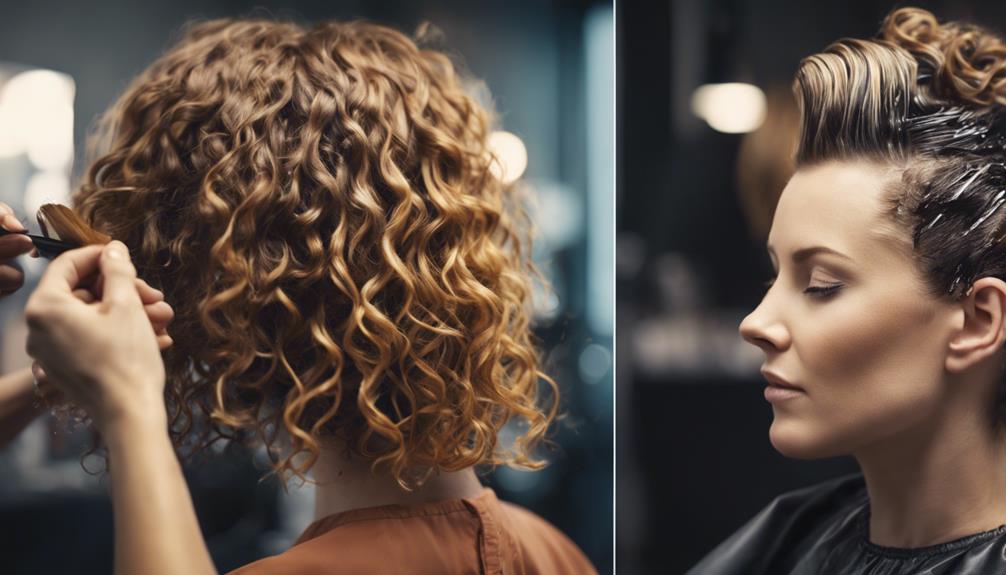When it comes to styling your hair, both clean and dirty hair have their benefits. Clean hair offers a polished finish, better product adherence, and easier styling. It allows your styles to last longer and keeps your scalp healthy. On the other hand, dirty hair comes with natural oils that can improve texture, making it easier to create styles like soft waves or updos. Each option can work for different occasions. Plus, learning to balance your washing routine can enhance your hair’s health and styling versatility. Discovering the ideal approach can further elevate your styling game.
Key Takeaways
- Clean hair offers better manageability, product adherence, and a polished finish, making styling easier and more effective.
- Dirty hair can provide texture and grip, allowing styles like braids and updos to hold better and appear effortlessly chic.
- Dry shampoo can refresh dirty hair by absorbing excess oil and adding volume at the roots, extending the time between washes.
- Regular washing prevents scalp irritation and dandruff, promoting a healthy environment for hair growth and enhancing overall hair health.
Understanding Dirty Hair
Dirty hair accumulates oil, dirt, and pollutants, which can weigh it down and leave it looking lackluster. When you skip washing your hair, the build-up can become excessive, leading to an unhealthy scalp and hair. That greasy feeling isn't just uncomfortable; it can attract even more dirt and dust, making your hair appear dirtier than it actually is.
While minimal build-up might be acceptable for a day or two, delaying washes beyond that can result in irritation and potential damage. You might notice that your hair starts to lose its natural shine and becomes harder to style. If you've got oily hair, it's especially important to keep an eye on how long you go without washing.
Understanding your hair type helps you adjust your washing routine, ensuring you maintain ideal health. For those who neglect their washing routine, the consequences can be quite noticeable in both texture and appearance.
Clean Hair Vs. Dirty Hair
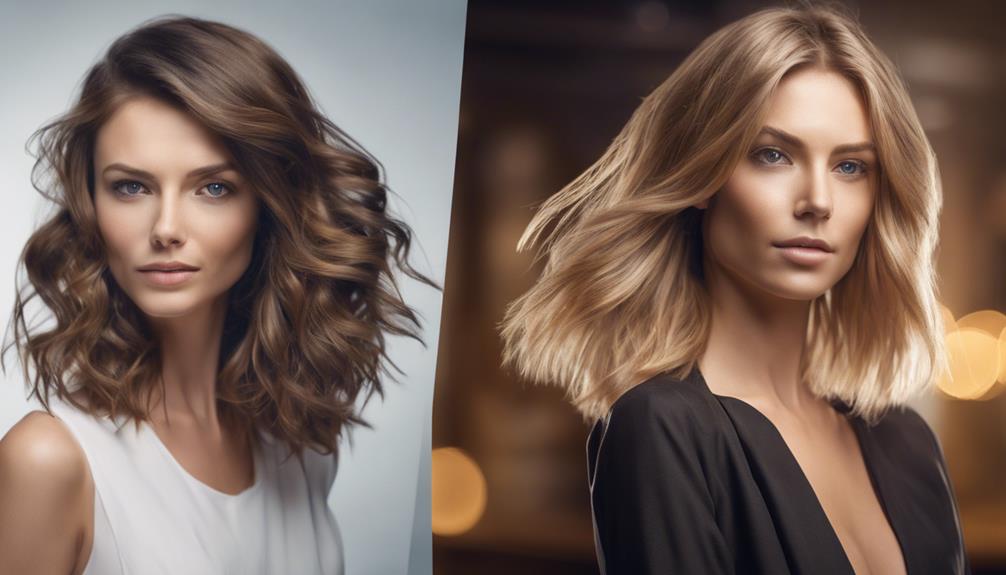
When it comes to styling, clean hair often gives you a fresh start, allowing for easier manipulation and a polished finish.
However, dirty hair can surprise you by holding styles better, especially if you have softer textures. Dirty hair has a natural grit and texture that can help hair hold styles, like updos or braids, for longer periods of time. It also tends to have more lift and volume, making it easier to create texture and structure in hairstyles. When it comes to dirty hair, the choice between styling wax vs pomade depends on the specific look you’re trying to achieve. Styling wax provides a matte finish and a more natural hold, while pomade adds shine and can create sleek, polished looks. Both can be effective on dirty hair, but the choice ultimately comes down to the desired style and personal preference.
Understanding the benefits of both can help you decide the best approach for your unique hair type and desired look.
Benefits of Clean Hair
Clean hair sets you up for styling success, as it allows products to stick better and gives your look a polished finish. When you're washing your hair, you're not just cleansing; you're also preparing a perfect canvas for your style.
Here are three key benefits of clean hair:
- Better Product Adherence: Clean hair allows styling products to cling effectively, ensuring your style lasts longer without the weight of product build-up.
- Enhanced Manageability: Without the slickness from natural oils, clean hair is easier to style. You'll find it simpler to hold curls, add volume, and achieve the desired look.
- Scalp Health: Regular washing of your hair helps prevent irritation and dandruff. A healthy scalp promotes better hair growth and overall hair health.
Styling Techniques for Dirty Hair
While clean hair offers a polished look, styling techniques for dirty hair can capitalize on its natural texture and oils to create effortless, beautiful styles. When your hair is dirty, it can hold styles better and have more volume. Embracing your hair’s natural oils can also help protect it from damage caused by daily styling. To enhance the look of dirty hair, some people swear by dry shampoo, while others opt for texturizing spray – leading to the ultimate hair product showdown. Ultimately, finding the right product for your dirty hair will depend on your hair type and the style you want to achieve.
Day-old hair often provides better grip for styles like soft waves, making it easier to achieve that relaxed, tousled appearance. To enhance this effect, use dry shampoo at the roots to absorb excess oil and add volume.
By day 3, your hair may feel a bit oily, but that's perfect for half-up styles, low buns, or braids that require minimal effort and can still look chic. These styles aren't only practical but also play into the natural wave and texture your hair develops over time.
If you reach day 4 without washing, consider using an updo to keep things fresh, while dry shampoo can help keep your roots looking clean.
Even though fresh hair has its perks, don't underestimate the styling potential of hair that's a few days old. Embrace the unique texture and versatility dirty hair offers, and you'll find that you can style your hair in ways that are both easy and stunning.
Stylist Tips for Events
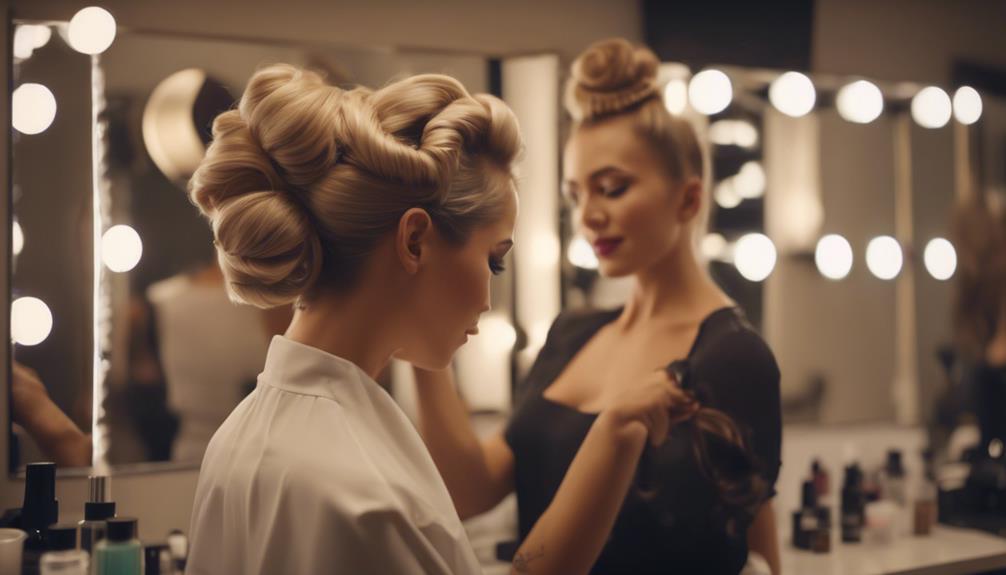
To achieve the best results for your event hairstyle, it's crucial to start with freshly washed hair that allows styling products to adhere properly.
Clean hair provides a solid base, helping you avoid that greasy look, especially if you have oily hair. Plus, it enhances the longevity of your style, keeping you looking polished throughout the event.
Here are three stylist tips to keep in mind:
- Blow-Dry After Washing: Blow-drying your freshly washed hair not only helps it hold styles better but also gives it a sleek, elegant finish.
- Consult a Stylist: If you're unsure about how often to wash your hair, consult a stylist for a personalized washing routine. This guarantees peak hair health and aesthetic for your special event.
- Trial Runs: If your hair struggles to hold styles, consider doing trial runs with day-old hair. This can help you find the best washing strategy before the big day.
Effective Hair Washing Techniques
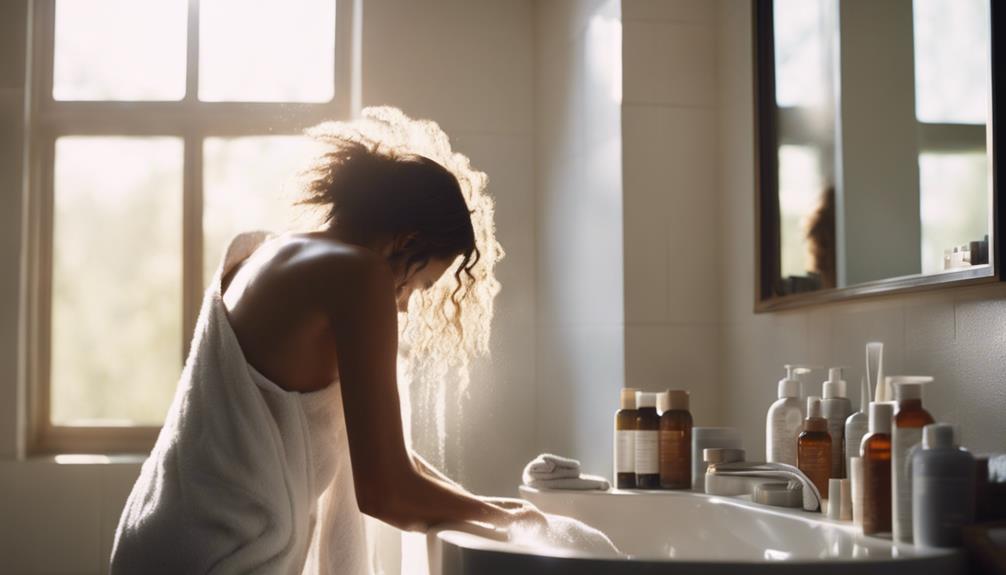
When it comes to effective hair washing, the frequency and techniques you use play an essential role in maintaining healthy locks.
You'll want to find the right balance in how often you wash your hair while using the proper methods to cleanse your scalp and strands effectively.
Importance of Washing Frequency
Finding the right washing frequency for your hair is essential to maintaining its health and shine. Washing too often can strip your hair of its natural oils, leading to dryness and increased oil production. For most hair types, aiming to wash your hair 2-4 times a week is often sufficient. Pay attention to how your hair feels and adjust accordingly.
Here are three tips to help you determine the best washing frequency for the care of your hair:
- Assess Your Hair Type: If you have oily hair, you might need to wash more frequently. Conversely, dry or curly hair may benefit from less frequent washing.
- Use Two Shampoos: Consider using one shampoo for removing product build-up and another for thorough cleansing. This method promotes healthier hair and a balanced scalp.
- Monitor Your Scalp and Hair Condition: Regularly observe how your hair reacts to your washing routine. Adjust your frequency based on your hair's needs to optimize its health and texture.
Techniques for Effective Cleansing
Understanding your hair's washing frequency sets the stage for effective cleansing techniques that keep your locks healthy and vibrant. Here are some key methods to enhance your cleansing routine:
| Technique | Description | Benefits |
|---|---|---|
| Double Shampooing | Use one shampoo to break down build-up and another for a thorough cleanse. | Removes residue and maintains health. |
| Proper Amount of Shampoo | A quarter-sized amount is often enough; adjust based on your hair length and thickness. | Prevents overuse and guarantees even distribution. |
| Scalp Massage | Gently massage your scalp while washing. | Stimulates oil distribution and boosts scalp health. |
When applying conditioner, focus on the mid-length to ends, avoiding the scalp to prevent excess oiliness. Keep in mind that fine hair may need more frequent washing than thicker hair. By incorporating these techniques, you'll promote a healthier scalp and more vibrant hair, making your cleansing routine more effective. Remember, your hair type should guide your approach to washing, and adjusting your techniques can make all the difference!
Pre-Blowdry Essentials
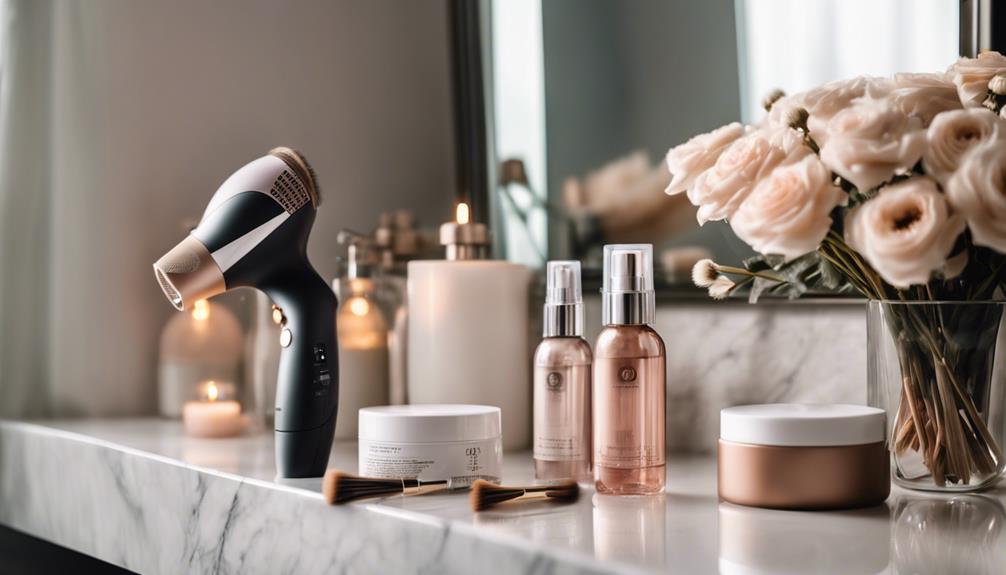
Before you grab the blow dryer, apply protective products to clean, towel-dried hair to minimize damage and enhance your styling results. Using heat protection is vital for maintaining your hair's health while achieving that perfect look.
Here are three essential products to take into account:
- Leave-in Conditioner: A lightweight leave-in, like Oribe Straight Away Smoothing Blowout Hair Cream, provides heat protection and improves manageability without weighing your hair down. Focus on applying it to the mid-lengths and ends.
- Smoothing Cream: Another great option is a smoothing cream that offers both hydration and heat protection. This can help control frizz and make your hair easier to style.
- Scalp Treatment: If you have specific scalp issues, use a treatment like Moroccan Oils Scalp Balance. It addresses dry or oily scalps, ensuring your hair looks and feels its best before blow-drying.
Benefits of Less Frequent Washing
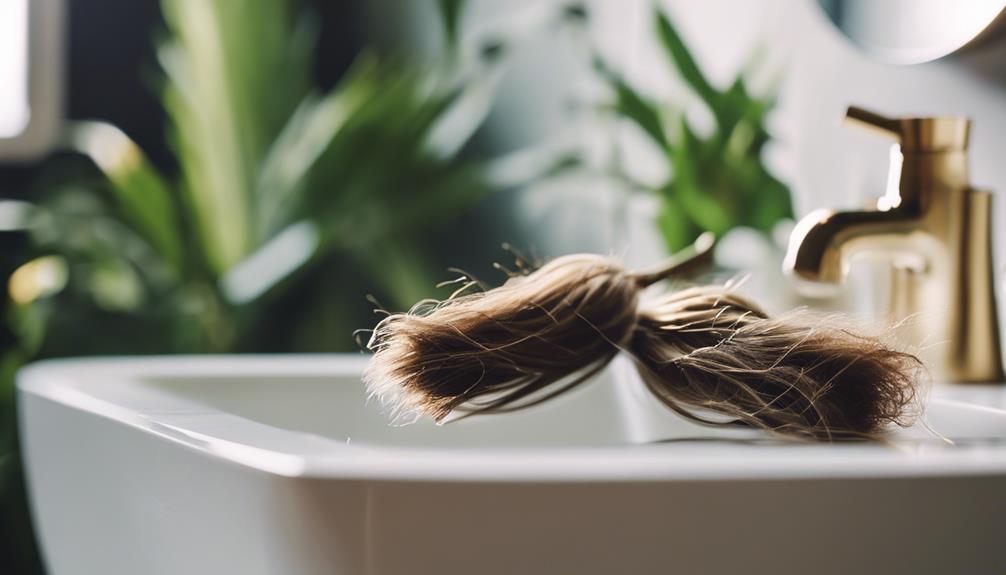
Washing your hair less often can lead to shinier, healthier locks by allowing your scalp's natural oils to nourish your strands. When you wash your hair every day, you strip away these essential oils, which can leave your hair looking dull and feeling dry. By reducing the frequency of washing, you give your scalp a chance to stabilize oil production, creating a more balanced environment that promotes overall hair health.
One of the significant benefits of less frequent washing is decreased scalp irritation. Frequent cleansing can cause your scalp to become irritated and dry, leading to discomfort and even dandruff. Additionally, using fewer harsh chemicals from shampoos can strengthen your hair over time, enhancing its resilience.
Participants in studies have reported noticeable improvements in their hair and scalp conditions after gradually increasing the days between washes. As your hair adjusts, you might find that it becomes more manageable and retains moisture better. Embracing this approach not only saves time but can also lead to healthier, more vibrant hair.
Common Hair Care Myths

Several common hair care myths can lead to misunderstandings about how to maintain healthy hair and scalp. You might think you need to wash your hair daily to keep it clean, but over-washing can strip your hair of natural oils, causing your scalp to produce even more oil.
Here are some myths you should be aware of:
- Oily hair needs frequent washing – In reality, allowing your scalp to adjust can help stabilize oil production over time.
- Dandruff is just a hygiene issue – Dandruff often stems from scalp conditions, not just poor cleanliness.
- Dry shampoo is a healthy substitute for washing – While convenient, overusing dry shampoo can lead to scalp issues and increased dirtiness.
Understanding these myths can help you adopt better practices for your hair and scalp. Instead of constantly reaching for shampoo, focus on finding a routine that balances cleanliness with the natural oils your hair needs.
Adjusting to New Hair Routines
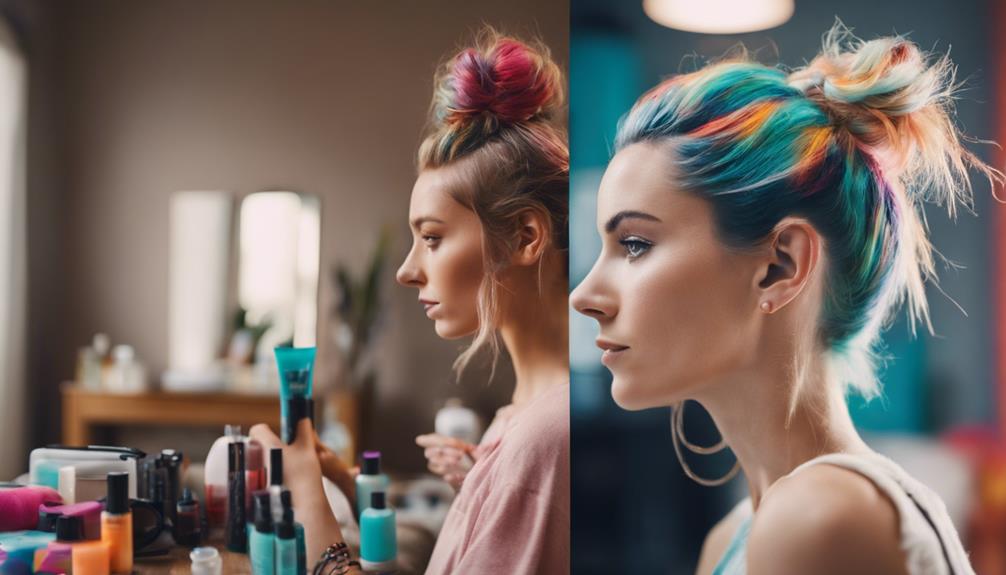
Adapting to a new hair washing routine can feel uncomfortable at first, but your scalp will eventually adjust and thrive. When you begin to wash your hair less frequently, it's common to experience a shift phase. Your scalp's oil production will stabilize over time, and you'll likely notice healthier hair. Participants in recent studies found that skipping washes for 2-4 days made a significant difference.
To make this adjustment smoother, consider gradually increasing the days between washes. This helps your scalp acclimate without excessive oiliness or irritation. Incorporate scalp massages during this period to stimulate oil distribution, promoting a healthier scalp environment.
Here's a quick guide to help you navigate your new routine:
| Day | Action |
|---|---|
| 1 | Wash hair |
| 2 | Air dry & style |
| 3 | Scalp massage |
| 4 | Skip wash |
Monitor your hair and scalp condition closely. If your hair tends to feel oily or uncomfortable, tweak your routine as needed. Remember, each person's hair is unique, and adjustments may vary!
Caring for Your Styling Tools
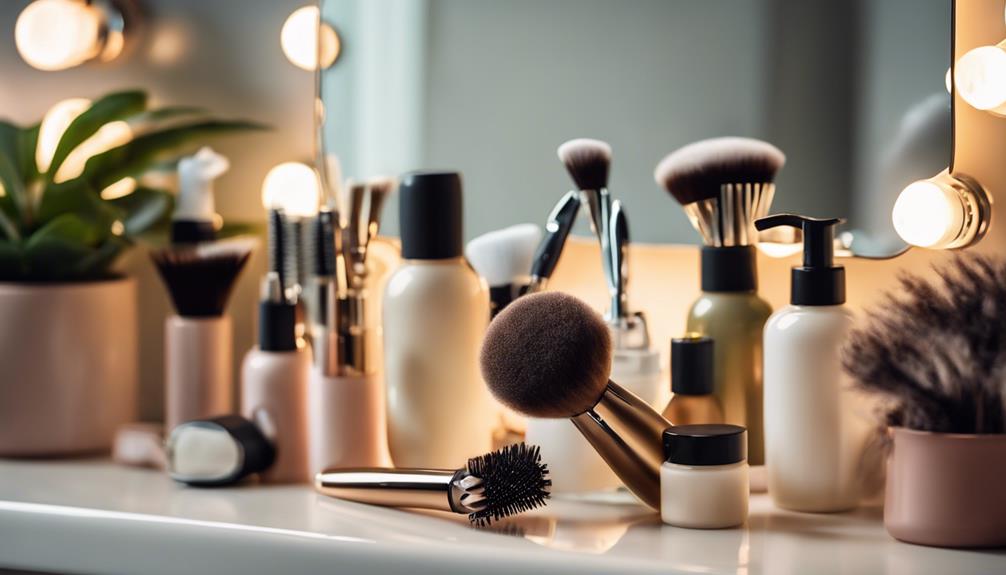
Caring for your styling tools is essential for maintaining their performance and ensuring your hair stays healthy and vibrant. Regular cleaning of hair styling tools prevents product buildup that can lead to hair damage, such as breakage and split ends.
Here are three key steps to keep your tools in top shape:
- Hairbrushes: Clean them weekly to remove oils, dead skin cells, and dust. For a deep clean, soak your brushes in warm water mixed with shampoo and use a wide-toothed comb to dislodge debris.
- Flat Iron: Wipe your flat iron with a damp cloth monthly to prevent product residue from snagging your hair. For tougher buildup, use rubbing alcohol to maintain its performance.
- Blow Dryer: Maintain airflow efficiency by cleaning the lint filter monthly. Remove the back cover and wipe the body with a damp cloth to keep it functioning well.
Frequently Asked Questions
Is It Better to Style Hair Clean or Dirty?
When styling hair, it depends on your hair type and desired look. Clean hair often provides a better foundation for hold, while day-old hair may offer more texture. Experiment to find what works best for you.
Do Stylists Prefer Clean or Dirty Hair?
When preparing for a wedding, you'll find most stylists prefer clean hair. It provides a fresh base, allowing them to use their techniques effectively. However, day-old hair might work better for certain styles, so experimenting helps!
Is It True That Not Washing Your Hair Is Good?
Yes, not washing your hair can be beneficial. It allows natural oils to nourish your strands, reducing dryness and irritation. Gradually extending the time between washes helps maintain a healthier scalp and improves overall hair condition.
Is It Better to Dye Your Hair When It's Clean or Dirty?
When dyeing your hair, it's often best to wash it the day before. This way, you strike a balance, allowing for better dye absorption while still keeping some natural oils to protect your scalp.
Conclusion
In the end, whether your hair's clean or dirty, you can rock a great style.
Embrace the natural texture, choose the right products, and trust your stylist's expertise.
Remember, less frequent washing can lead to healthier locks, while proper care for your tools guarantees the best results.
So, experiment with your routine, enjoy the process, and find what works for you.
With the right mindset, you'll discover that fabulous hair is within your reach, no matter the wash cycle!
